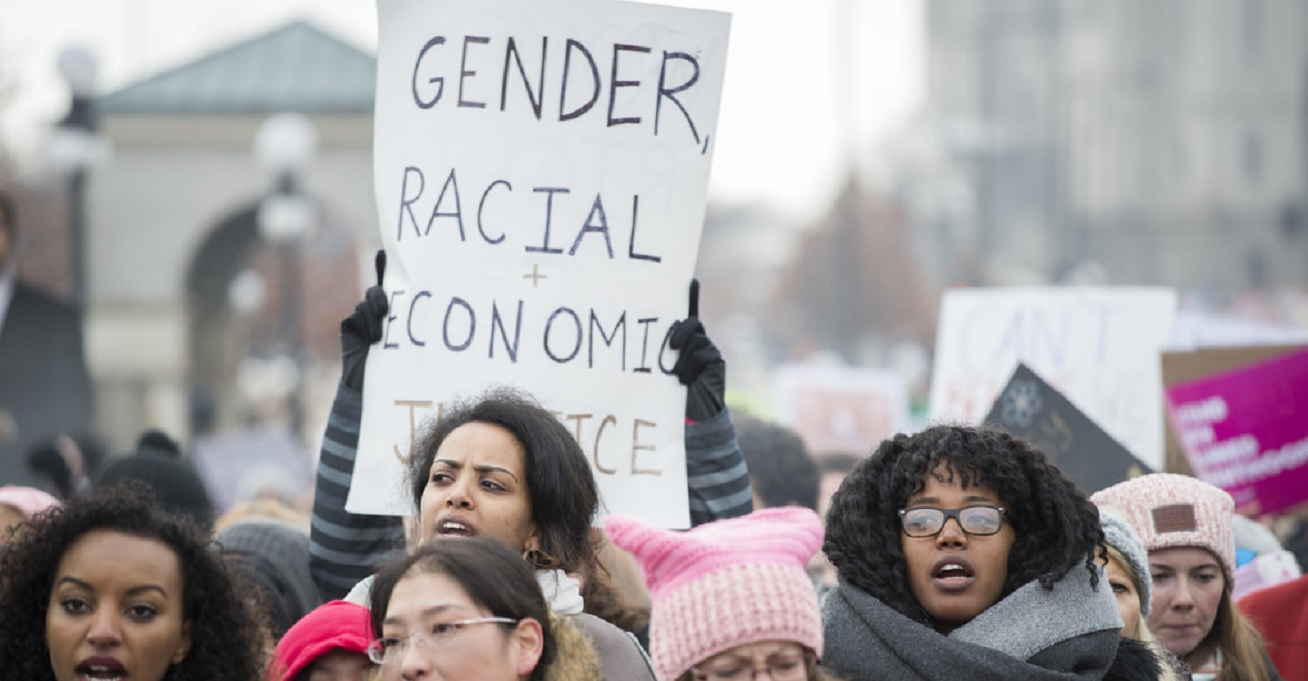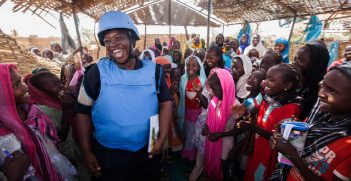Protecting the Most Vulnerable from Gender-Based Violence

High-profile scandals have recently pushed gender-based violence into the media spotlight. This Saturday, however, is a reminder that despite progress, these issues are most pressing among the world’s most vulnerable.
This Saturday, 25 November, is the International Day for the Elimination of Violence against Women and Girls. It marks the start of the UN-led campaign of 16 days of activism against gender-based violence. The campaign aims to draw attention to, and galvanise efforts in stopping what is considered to be among the most normalised human rights violations globally.
This year’s theme, ‘Leave No One Behind’, speaks to the groups of women and girls affected by gender-based violence in crises. This is exemplified in the Asia-Pacific region, which is one of the most prone to internal and cross-border displacements due to low-intensity armed conflicts. Women and girls in this region are also displaced by rapid and slow-onset environmental disasters.
In one case alone, in the Rakhine state of Myanmar, Rohingya women and girls reportedly face violence from several different fronts: rape and sexual violence are perpetrated by Burmese security forces, as well as by ethnic Rakhine villagers; suffering severe post-rape complications, these women and girls also have to contend with protracted displacement in camps and shelters made more precarious by monsoon rains that intensify risks of infectious disease outbreak.
Forward movement
To say that no one ought to be left behind clearly suggests that there have been important strides in addressing violence against women and girls. Advances have been made in the development of global agendas that combat violence against women and girls, and to gender equality in political and economic participation. Examples include the promotion of a feminist foreign policy and the incorporation of a gender perspective as an integral component in aid and diplomacy. Most recently, the adoption of a Gender Action Plan at COP23 in Bonn last week demonstrates a sincere commitment to development. The mechanisms these platforms inspire can contribute to greater societal awareness and change.
Progress has largely been through the sustained mobilisation of women’s movements transnationally. Strengthening women’s activism and political alliances globally to promote ever more inclusive definitions of leadership is crucial for resisting the increasingly well-resourced conservative backlash, as well as the brazen hypermasculinity embodied by populist and authoritarian leaders. Initiatives that promote young women’s leadership present a hopeful avenue to fully recognise women’s and girls’ political agency as part of wider campaigns to end all forms of violence.
Importantly, there is now a growing body of research tools to assist in making visible the connections between women’s comprehensive security and their access to justice and protection, as well as inclusion in different political, legal, economic and socio-cultural institutions. Notably, these resources include the Women, Peace and Security Index and Women’s Resilience Index, which enable us to comparatively identify where and how to promote gender equality in any given society.
Stalled progress and regression
At the same time, we are seeing that progress has stalled in some areas. According to the Global Gender Gap Index report by the World Economic Forum, 2017 marked “a bad year in a good decade” due to a widening of gender gaps. No country fully achieved gender parity and the political empowerment sub-index registered the widest gender gap globally.
In addition, the report noted that historically the most challenging gender gaps to bridge are in the economic and health spheres. Indeed, reversals have occurred, especially in the case of sexual and reproductive health and rights such as through the reinstatement of the Global Gag Rule. Further restrictions to accessing emergency contraception, post-exposure prophylaxis and abortion in fragile settings mean that women and girls bear the brunt of crises and are denied their human right to health precisely when they need these services the most.
Lastly, the relationship between political violence and gender inequality is manifested in the ongoing violence against women human rights defenders. The experiences of these women remain marginal to security and development agendas, yet they allow us to understand the intersections of gender-based violence and the political economy of climate change and related crises. This is because among the most targeted women human rights defenders are those campaigning against extractive industries. They are also typically environmental activists from indigenous and ethnic minority groups who face threats to their lives and their cultural identities as a result of depletive economic practices.
Here we see clearly how gender-based violence represents a fundamental barrier to political participation of women and girls. Overall, these signs indicate that the struggle to eliminate violence against women and girls depends on strategies that are sustained and adaptive to changing political and economic dynamics.
Toward inclusive peace and security
The answer then to ensuring that no one is left behind is that we encompass the “universality of violence” as emphasised by the UN Special Rapporteur on Violence against Women. Violence against women and girls is not only physical, but is also structural and therefore shaped by the distribution of resources and power globally. Critical interventions must respond to both immediate and long-term needs of the most at-risk groups of women and girls in crises and emergencies.
This begins with women’s bodily autonomy and wellbeing, such that they are able to make meaningful sexual and reproductive decisions before, during and after crises. In addition, state and global investments in health and social welfare more broadly must be matched by the promotion and broadening of women’s roles in societies and governance. Specifically, the localised knowledges they hold in mitigating various forms of crisis—from climate change to conflict and violent extremism—must be represented at all levels of political decision-making, including community or village councils. For example, through community women’s forums such as Women i Tok Tok Toketa (Women Talk Together) in Vanuatu.
Feminist politics must also be inclusive. This means resisting efforts to misrepresent the elimination of violence against women and girls as simply a women’s issue to be compartmentalised to specific ministries or agencies, when feminist research and activism have long stressed the importance of the state and global political economy. No one will be left behind when it is recognised that the burdens of ensuring survival in a crisis-prone world disproportionately fall upon women and girls in the Global South. At the same it is important not to lose sight of the violence occurring for many communities within the Global North.
Crucially, greater attention needs to be given to fostering critical consciousness to rise above the policing of authenticity or who gets to speak of and for violence against women and girls. This is not the same as simply recognising that men are allies in ending violence. Rather, that we avoid attempts to reduce the transformative potential of feminist critique into a generalised antagonism between women and men. Solidarity can occur between and across genders, ethnicities, religions, age groups, sexualities, able-bodiedness and class. The goal of ending all forms of violence whereby no one is left behind begins with ending all forms of prejudice and inaction.
Maria Tanyag is a PhD candidate and research fellow at the School of Social Sciences, Monash University.
This article is published under a Creative Commons Licence and may be republished with attribution.




